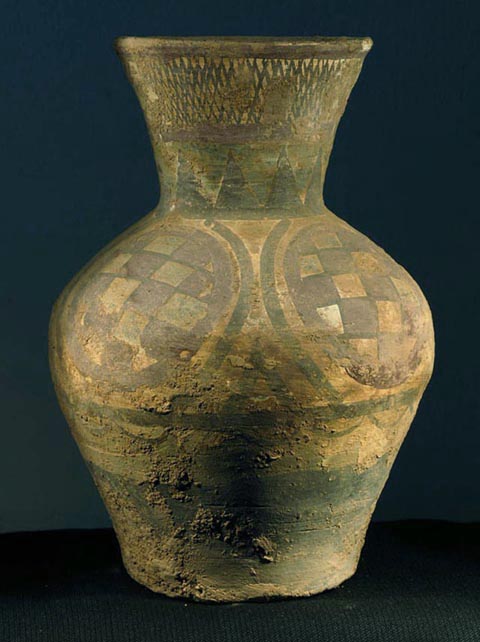|
Neolithic 3 Color
Painted Pottery Urn, China (3800
BC
-
2000 BC) A
three-color painted pottery urn from the Neolithic period in China,
possibly from the Majiayao or maybeYangshao cultures, which
overlapped. The most interesting point about
this urn is the use of
3 color painting, red, black, and white. Much of the white painted
areas have been stained from the surrounding reddish soil. The urn is
25 cm. tall.

Majiayao culture sites are distributed from Shaanxi province westward along the Wei River to Lanzhou, Gansu province, and along the upper reaches of the Yellow River and into Qinghai province. Phases of Majiayao culture included Majiayao (ca. 3100–ca. 2700 B.C.), Banshan (ca. 2600–ca. 2300 B.C.), and Machang (ca. 2200–ca. 2000 B.C.). Majiayao phase pottery typically has a red-buff earthenware body with a smoothed surface often finished with black painted decoration, including complicated running-spiral designs with two to four arms. Majiayao pots vary greatly in shape, ranging from bowls to jars with tall necks. The Banshan phase has a narrower range of pottery shapes and designs. Its large earthenware pots and urns often have designs in black and maroon-red paint on their shoulders. This use of two colors is a chief distinction between Banshan and Majiayao painted pottery.(from Princeton University Asian Art)
References A map of early Neolithic cultures in China.
|
